Plant-based banana bread is a delicious, wholesome alternative to traditional banana bread, made entirely with vegan ingredients. This dairy-free and egg-free recipe is perfect for those following a plant-based lifestyle or anyone looking for a healthier, more sustainable dessert option. With the right ingredients and baking techniques, you can achieve a moist, flavorful loaf that’s just as satisfying as the classic version.
Whether you’re a seasoned vegan baker or just starting out, this guide will walk you through everything you need to know about making the best plant-based banana bread at home. From choosing the right egg substitutes to using natural sweeteners, we’ve got you covered.
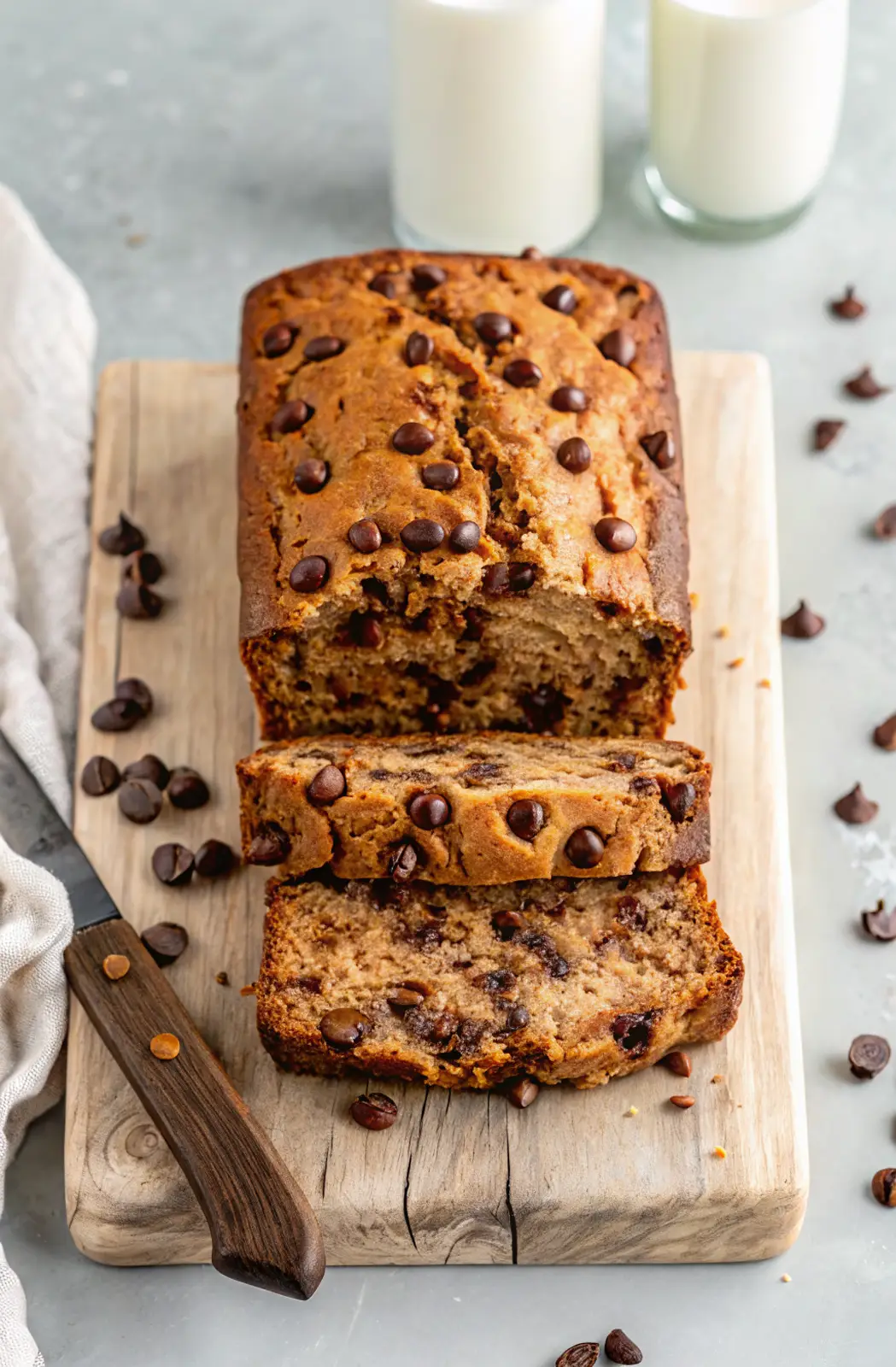
What Is Plant-Based Banana Bread?
Plant-based banana bread is a vegan-friendly twist on the classic recipe, using no dairy, no eggs, and only plant-based ingredients. Instead of butter, milk, or eggs, it relies on alternatives like flax eggs, almond milk, coconut oil, and whole grains to create the perfect texture.
This recipe is ideal for anyone looking for a healthier, allergen-friendly, or eco-conscious way to enjoy banana bread while maintaining great taste and texture.
Why Choose a Plant-Based Recipe?
Switching to a vegan banana bread recipe comes with plenty of health and sustainability benefits, including:
- Healthier Ingredients – Free from dairy and eggs, this recipe focuses on nutrient-dense, plant-based alternatives.
- Better for the Environment – Vegan baking reduces your carbon footprint and supports sustainable food choices.
- Dietary Flexibility – A great option for those who are lactose intolerant, allergic to eggs, or following a vegan diet.
- Rich in Fiber and Nutrients – Using whole grains, nuts, and plant-based milk increases fiber, vitamins, and minerals.
Nutritional Benefits of Vegan Banana Bread
Compared to traditional banana bread, plant-based banana bread offers several nutritional advantages:
| Nutrient | Traditional Banana Bread | Plant-Based Banana Bread |
|---|---|---|
| Calories | Higher due to butter & eggs | Lower with healthier fats |
| Cholesterol | Contains eggs & dairy | 0 mg (cholesterol-free) |
| Fiber | Lower due to refined flour | Higher with whole grains |
| Healthy Fats | Butter & saturated fats | Nuts, coconut oil, or avocado |
| Sugar | Refined sugar | Natural sweeteners like maple syrup or dates |
This makes vegan banana bread a fantastic option for those looking to indulge guilt-free while maintaining a balanced diet.
Key Ingredients for the Best Vegan Banana Bread
Creating the perfect plant-based banana bread starts with selecting the right ingredients. Since traditional recipes rely on dairy and eggs for moisture and structure, it’s essential to use vegan-friendly substitutes that maintain the bread’s classic texture and taste.
Essential Ingredients for a Perfect Texture
For a moist, flavorful, and well-balanced banana bread, here are the key ingredients you’ll need:
- Ripe Bananas – The base of any great banana bread. Overripe bananas (with brown spots) are best because they add natural sweetness and moisture.
- Flour Choices – You can use all-purpose flour for a classic texture, or opt for whole wheat, oat flour, or almond flour for a more nutritious, gluten-free option.
- Plant-Based Milk – Almond milk, oat milk, soy milk, or coconut milk all work well as a dairy-free liquid component.
- Oil or Nut Butter – Coconut oil, avocado oil, or nut butter (like almond or peanut butter) adds richness and prevents dryness.
- Baking Powder & Baking Soda – Essential for giving the bread a light and fluffy texture.
- Salt & Spices – A pinch of salt, cinnamon, nutmeg, or vanilla extract enhances the natural sweetness and depth of flavor.
Best Egg Substitutes for Vegan Banana Bread
Eggs provide structure and binding in traditional banana bread, but in a plant-based recipe, you can use these effective substitutes:
| Egg Substitute | Measurement | Best For |
|---|---|---|
| Flaxseed Egg | 1 tbsp ground flaxseed + 3 tbsp water (let sit for 5 min) | Adds fiber and binding properties |
| Chia Seed Egg | 1 tbsp chia seeds + 3 tbsp water (let sit for 5 min) | Provides structure and moisture |
| Mashed Bananas | ¼ cup mashed banana per egg | Boosts flavor and moisture |
| Unsweetened Applesauce | ¼ cup applesauce per egg | Keeps the bread soft and low in fat |
| Silken Tofu | ¼ cup blended silken tofu per egg | Adds density and protein |
Best Choice? For plant-based banana bread, mashed bananas or flaxseed eggs work best, as they maintain the bread’s structure while keeping it moist.
Natural Sweeteners and Healthier Sugar Alternatives
Instead of refined white sugar, plant-based banana bread can be sweetened naturally with:
- Maple Syrup – Adds a mild caramel-like sweetness.
- Coconut Sugar – A low-glycemic alternative to refined sugar.
- Date Paste – Blended dates provide fiber and natural sweetness.
- Agave Syrup – A plant-based liquid sweetener with a neutral taste.
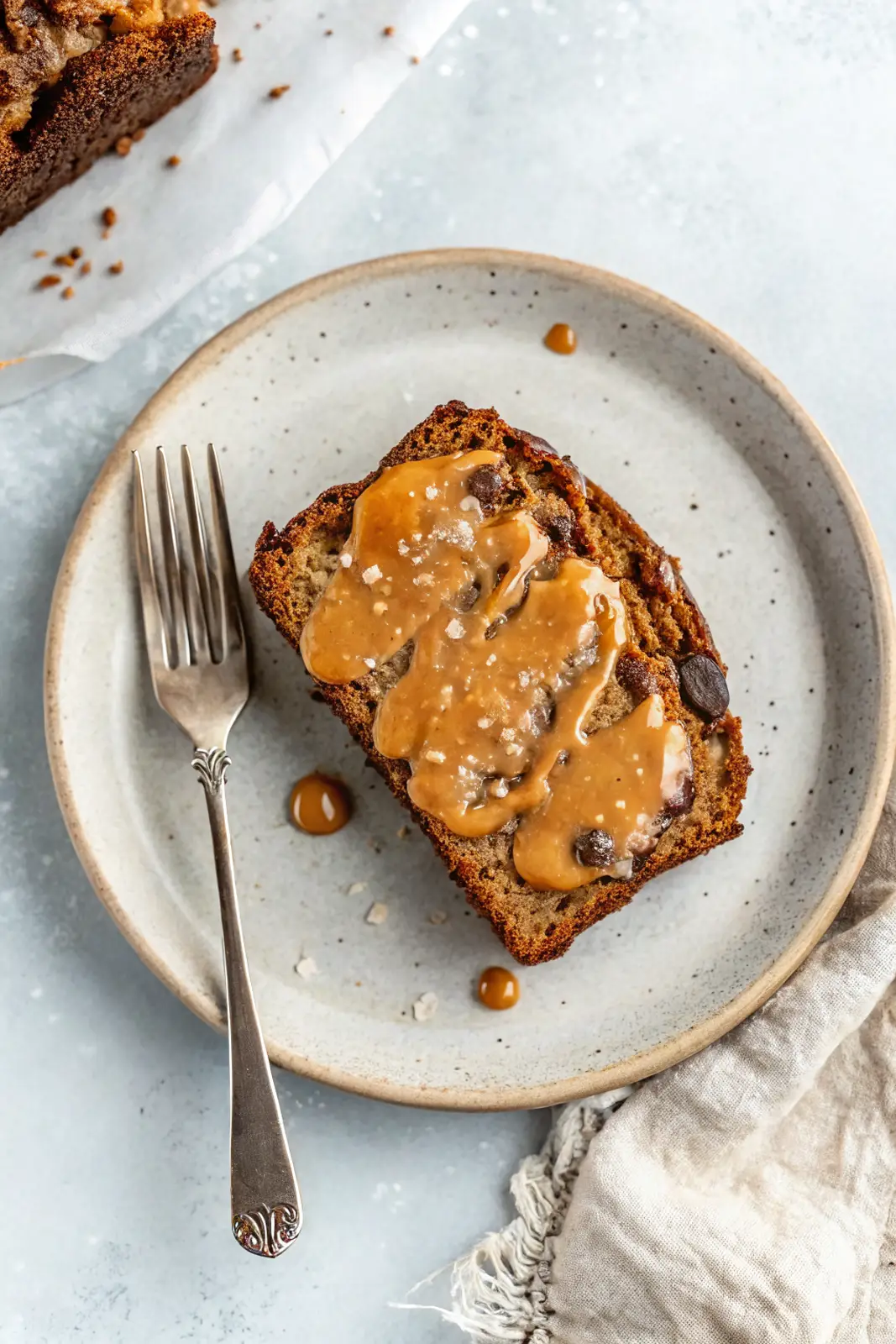
Step-by-Step Recipe for Homemade Plant-Based Banana Bread
Now that we’ve covered the key ingredients, it’s time to bake the perfect plant-based banana bread. This easy, one-bowl recipe guarantees a moist, fluffy, and flavorful loaf, perfect for breakfast, snacking, or dessert. Whether you’re new to baking or a seasoned pro, this step-by-step guide will help you make the best plant-based banana bread every time.
Ingredients You’ll Need for Plant-Based Banana Bread
To make this delicious plant-based banana bread, gather these wholesome ingredients:
Dry Ingredients
- 2 cups all-purpose flour (or whole wheat for extra fiber)
- 1 teaspoon baking soda
- ½ teaspoon baking powder
- ½ teaspoon salt
- 1 teaspoon cinnamon (optional, but highly recommended for flavor)
Wet Ingredients
- 3 ripe bananas, mashed
- ½ cup maple syrup or coconut sugar
- ⅓ cup coconut oil (or any neutral oil)
- ¼ cup plant-based milk (almond, oat, or soy)
- 1 flaxseed egg (1 tbsp flaxseed meal + 3 tbsp water)
- 1 teaspoon vanilla extract
Optional Add-Ins for Extra Flavor
- ½ cup chopped walnuts or pecans for crunch
- ½ cup vegan chocolate chips for a touch of sweetness
- ¼ cup shredded coconut for added texture
If you’re looking for an even simpler version, check out our 4-Ingredient Banana Bread for a quick and easy option with minimal ingredients!”
Step 1: Preparing the Ingredients
- Preheat your oven to 350°F (175°C) and grease a 9×5-inch loaf pan or line it with parchment paper.
- Mash the bananas in a large mixing bowl until smooth. The riper the bananas, the better the sweetness and moisture in your plant-based banana bread.
- In a small bowl, prepare the flax egg by mixing 1 tablespoon of ground flaxseed with 3 tablespoons of water. Let it sit for 5 minutes until thickened.
Step 2: Mixing the Banana Bread Batter
- Add the maple syrup (or coconut sugar), melted coconut oil, plant-based milk, flax egg, and vanilla extract to the mashed bananas. Stir well to combine.
- In a separate bowl, whisk together the flour, baking soda, baking powder, salt, and cinnamon.
- Gradually fold the dry ingredients into the wet mixture, stirring gently until just combined. Do not overmix—overmixing can make the plant-based banana bread dense instead of fluffy.
- If using nuts, chocolate chips, or shredded coconut, fold them into the batter for extra flavor and texture.
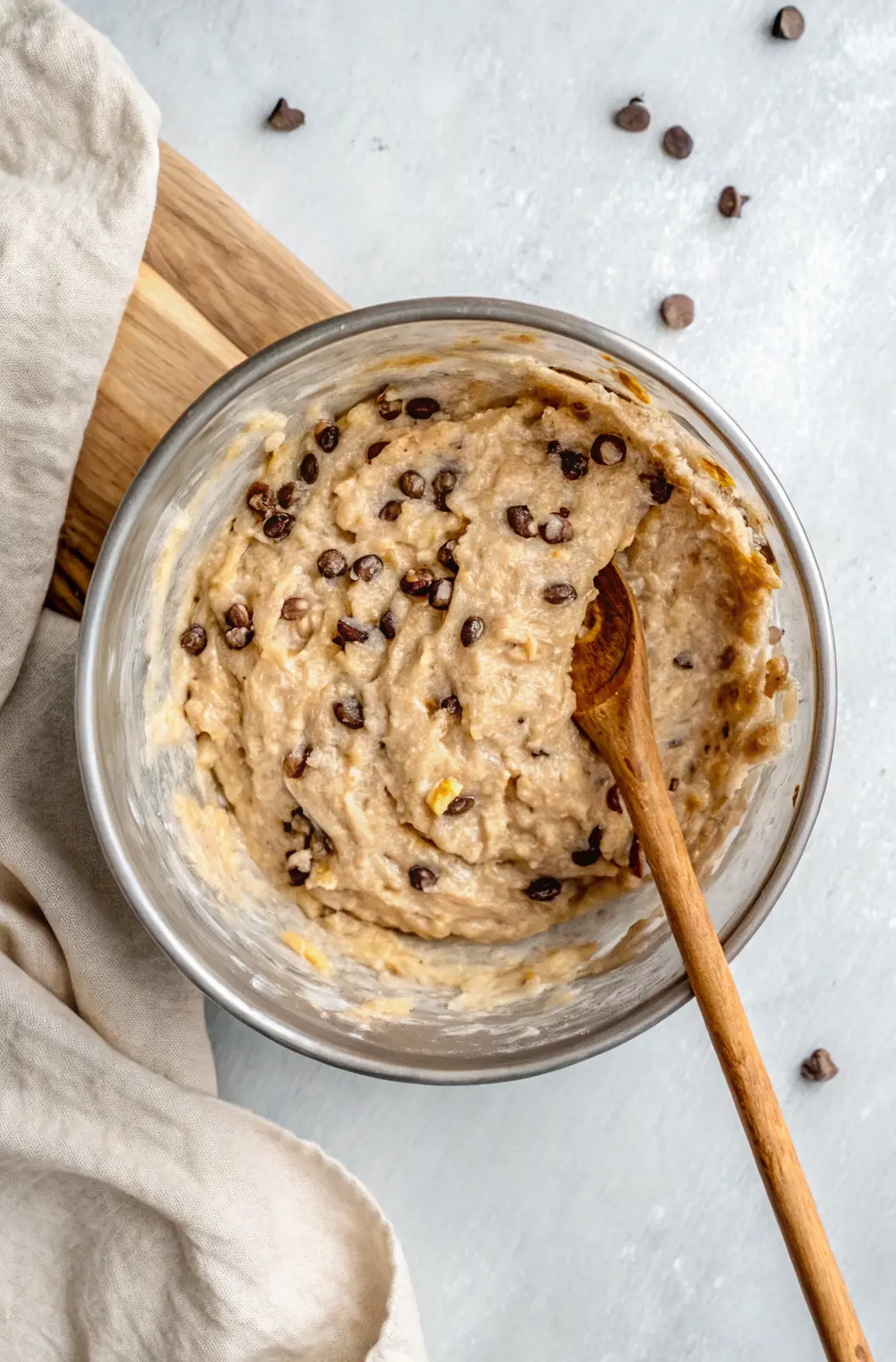
Step 3: Baking the Plant-Based Banana Bread
- Pour the batter into the prepared loaf pan and smooth the top with a spatula.
- Bake for 50-60 minutes, or until a toothpick inserted in the center comes out clean.
- If the top starts to brown too quickly, lightly cover with aluminum foil during the last 15 minutes of baking.
- Let the banana bread cool in the pan for 10 minutes, then transfer it to a wire rack to cool completely.
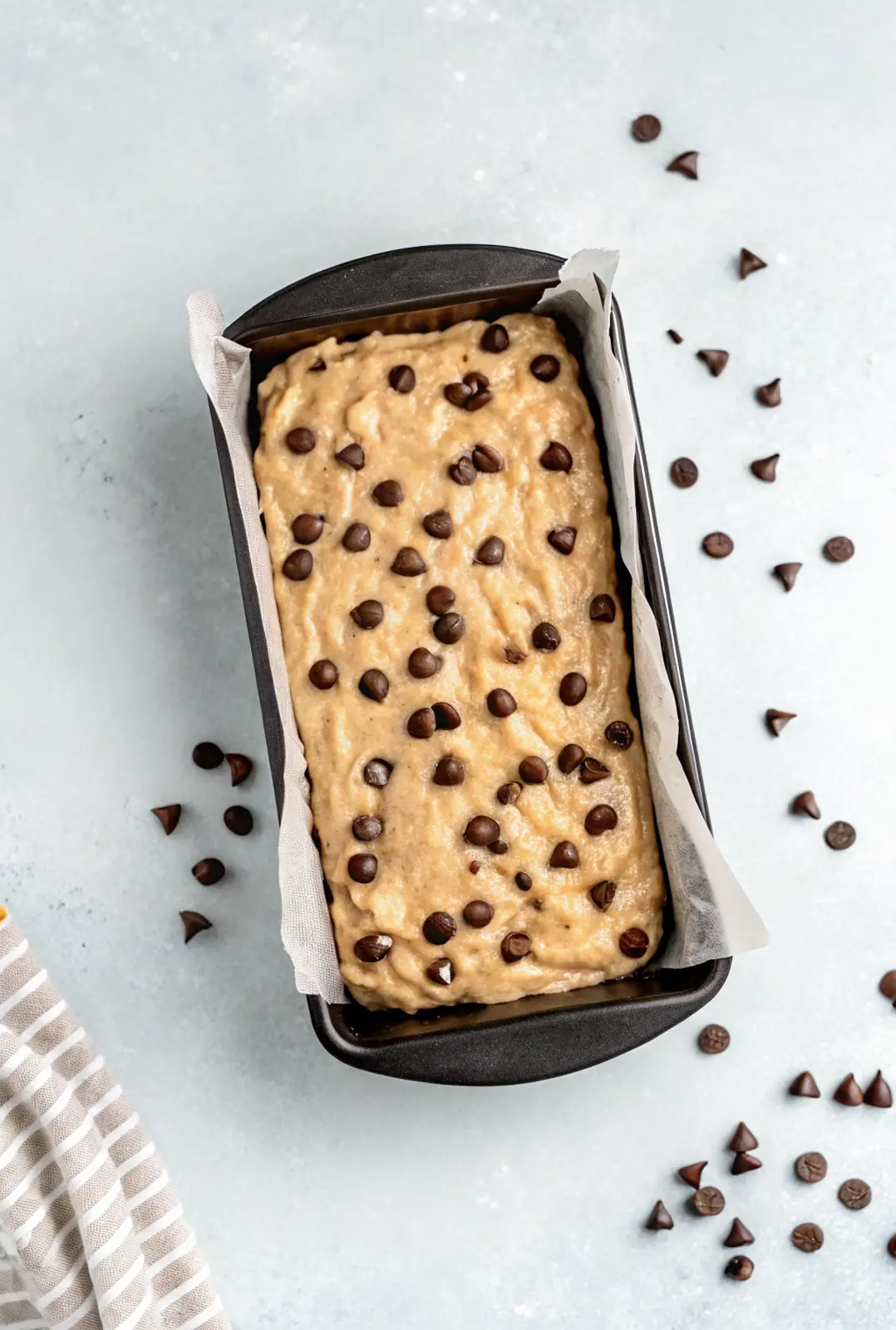
Step 4: How to Store Plant-Based Banana Bread
To keep your plant-based banana bread fresh, follow these storage tips:
- Room Temperature: Store in an airtight container for up to 3 days.
- Refrigerator: Keeps fresh for up to a week when stored properly.
- Freezer: Slice the plant-based banana bread, wrap individual pieces, and freeze for up to 3 months. Reheat in the microwave or toaster when ready to eat!
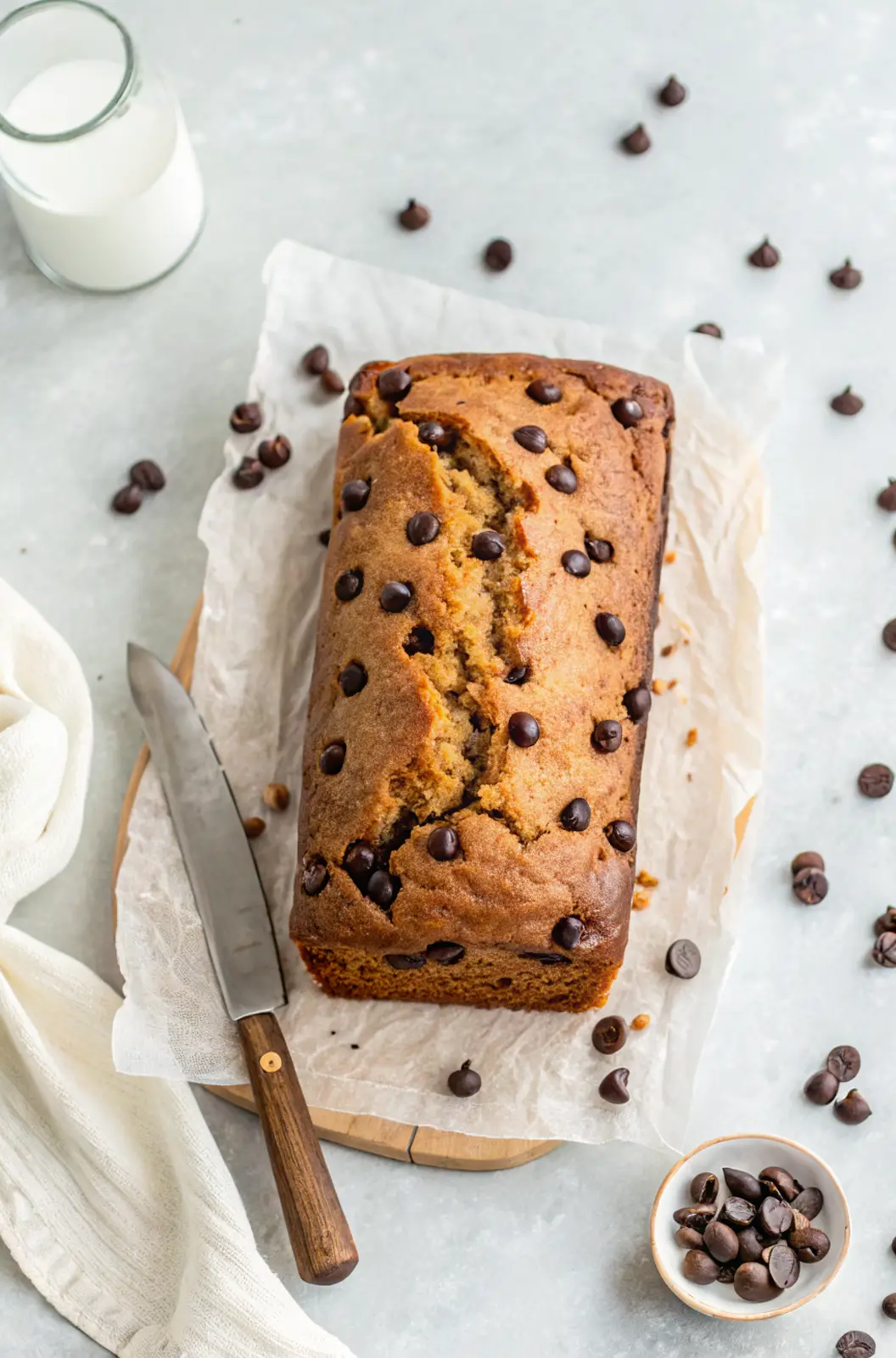
Tips for the Best Plant-Based Banana Bread
- Use overripe bananas—they add natural sweetness and moisture.
- Measure flour correctly—spoon it into the measuring cup and level it off.
- Avoid overmixing the batter—stir until just combined to maintain a light texture.
- Experiment with mix-ins—try raisins, nuts, or vegan chocolate chips for extra flavor.
Health Benefits of Plant-Based Banana Bread
One of the biggest advantages of plant-based banana bread is that it’s not just delicious—it’s also packed with nutrients and health benefits. By swapping out dairy, eggs, and refined ingredients for wholesome plant-based alternatives, you can enjoy a treat that’s better for your body and the environment.
In this section, we’ll compare vegan vs. traditional banana bread, highlight its nutritional advantages, and explore ways to make it even healthier.
Is Vegan Banana Bread Healthy?
Yes! Plant-based banana bread is often healthier than traditional banana bread because it contains:
✔ No dairy or eggs – Eliminates cholesterol and unhealthy saturated fats.
✔ Natural sweeteners – Uses maple syrup or coconut sugar instead of refined white sugar.
✔ Whole grain options – You can use whole wheat or oat flour for extra fiber.
✔ Healthy fats – Coconut oil, avocado oil, or nut butters provide good fats.
✔ Higher fiber – Thanks to bananas, whole grains, and flaxseed or chia seeds.
By making smart ingredient swaps, you can enjoy guilt-free banana bread without compromising on taste!
Comparing Vegan vs. Traditional Banana Bread
How does plant-based banana bread stack up against regular banana bread nutritionally? Let’s break it down:
| Nutrient | Traditional Banana Bread | Plant-Based Banana Bread |
|---|---|---|
| Calories | Higher due to butter & eggs | Lower with healthier fats |
| Cholesterol | Contains eggs & dairy | 0 mg (cholesterol-free) |
| Fiber | Lower due to refined flour | Higher with whole grains |
| Healthy Fats | Butter & saturated fats | Coconut oil, nut butter, or avocado |
| Sugar | Often refined white sugar | Natural sweeteners like maple syrup, dates, or coconut sugar |
Verdict? Plant-based banana bread is generally lower in unhealthy fats and sugar, while being higher in fiber and essential nutrients.
Best Ways to Make Plant-Based Banana Bread Even Healthier
Want to boost the nutritional value of your banana bread? Try these simple swaps:
✅ Use Whole Wheat Flour – Increases fiber and adds more nutrients.
✅ Replace Sugar with Mashed Dates or Maple Syrup – Reduces refined sugar intake.
✅ Add Chia Seeds or Flaxseeds – Boosts omega-3s, fiber, and protein.
✅ Swap Oil for Unsweetened Applesauce – Cuts down on fat while keeping moisture.
✅ Throw in Nuts or Seeds – Walnuts, almonds, or sunflower seeds add protein and crunch.
These small tweaks can make your plant-based banana bread even healthier without affecting the flavor or texture!
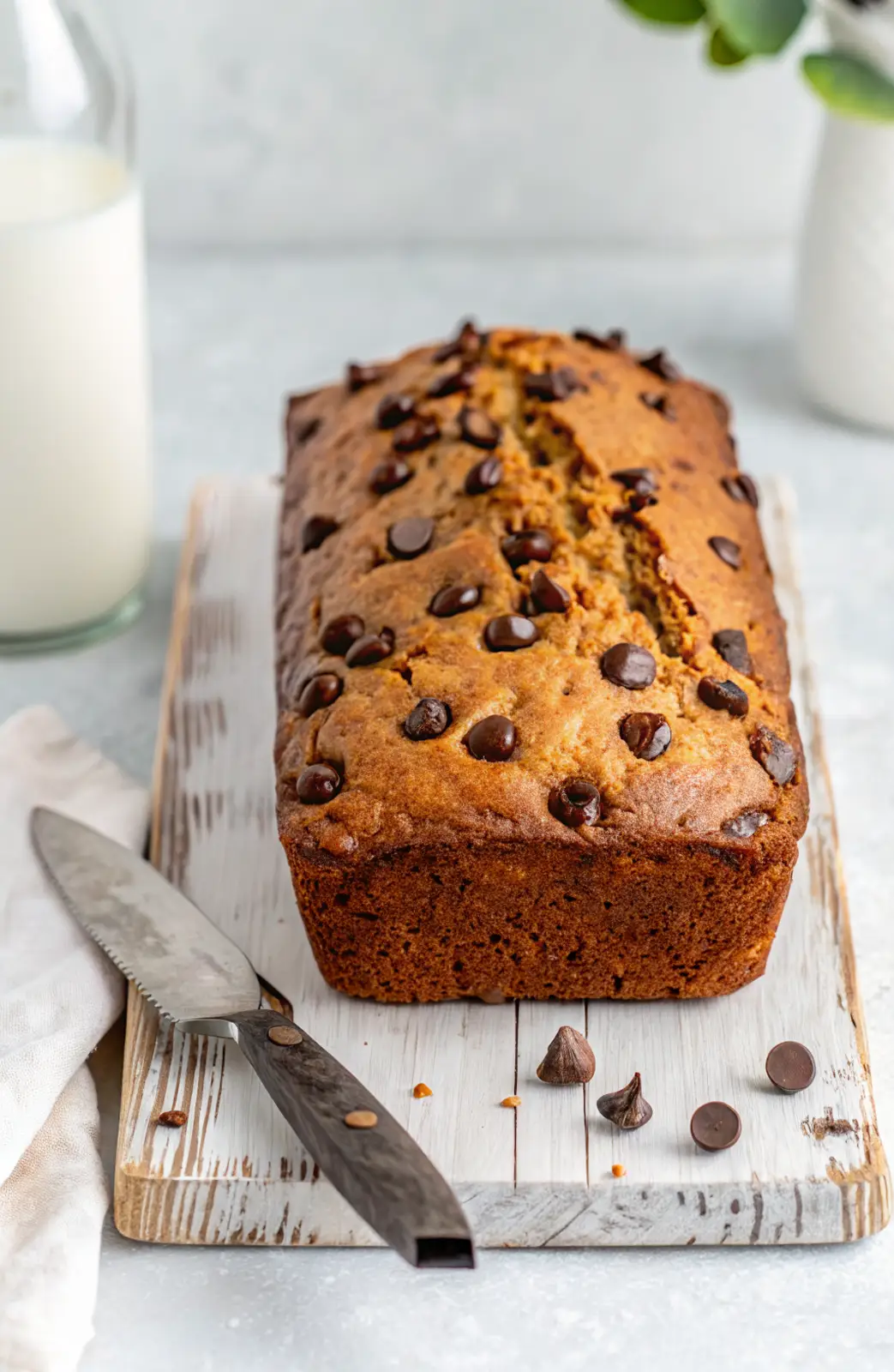
Variations of Plant-Based Banana Bread
One of the best things about plant-based banana bread is its versatility. Whether you have dietary restrictions or just want to try new flavors, there are many ways to customize your banana bread to fit your needs. In this section, we’ll explore variations like gluten-free, nut-free, and high-protein options, along with tips for making allergen-friendly banana bread.
1. Gluten-Free Banana Bread
If you’re following a gluten-free diet, you can still enjoy soft, fluffy plant-based banana bread by using alternative flours.
✅ Best Gluten-Free Flour Options:
- Oat flour – Adds a mild, nutty flavor and extra fiber.
- Almond flour – Creates a moist, slightly denser texture.
- Coconut flour – Absorbs moisture, so use less than regular flour.
- Gluten-free all-purpose flour blend – A convenient 1:1 swap for regular flour.
Pro Tip: Add 1 teaspoon of xanthan gum if your gluten-free flour blend doesn’t already include it. This helps bind ingredients together and prevents crumbly texture.
2. Nut-Free and Allergen-Friendly Banana Bread
Many banana bread recipes contain nuts (such as walnuts or almonds), but if you have nut allergies, there are nut-free alternatives.
What to Avoid:
- Almond flour
- Nut butters (almond, cashew, peanut)
- Chopped walnuts, pecans, or almonds
Nut-Free Substitutes:
- Sunflower seed butter – A creamy alternative to nut butters.
- Pumpkin seeds or sunflower seeds – Great for crunch without allergens.
- Coconut flour – If tolerated, it adds fiber and light sweetness.
3. High-Protein Vegan Banana Bread
Looking to boost your protein intake? Try these high-protein variations of plant-based banana bread.
Ways to Add More Protein:
- Use almond flour or chickpea flour – Higher in protein than wheat flour.
- Add a scoop of plant-based protein powder – Choose vanilla or unflavored for best results.
- Include chia seeds, flaxseeds, or hemp seeds – Adds healthy fats and protein.
- Stir in nut butter – Peanut butter, almond butter, or tahini add protein and richness.
Pro Tip: If adding protein powder, reduce the flour by ¼ cup to keep the texture light and moist.
4. Low-Sugar and Naturally Sweetened Banana Bread
For a low-sugar version of plant-based banana bread, try using natural sweeteners instead of refined sugar.
✅ Best Natural Sweeteners:
- Mashed dates – Blend into a paste for added fiber and natural sweetness.
- Maple syrup or agave syrup – Low-glycemic options.
- Unsweetened applesauce – Cuts down on sugar while keeping moisture.
- Stevia or monk fruit sweetener – Zero-calorie alternatives.
Pro Tip: The riper your bananas, the less extra sweetener you’ll need!
5. Chocolate Lover’s Banana Bread
If you’re craving a chocolatey twist, turn your plant-based banana bread into a decadent dessert.
Chocolate Add-Ins:
- Cocoa powder – Add ¼ cup for a rich chocolate flavor.
- Dairy-free chocolate chips – Use dark or semi-sweet vegan chocolate.
- Melted dark chocolate drizzle – For an indulgent topping.
Common Mistakes to Avoid When Baking Vegan Banana Bread
Even the most experienced bakers can make mistakes when preparing plant-based banana bread. Whether your loaf turns out too dry, too dense, or lacking flavor, small errors can impact the final result. In this section, we’ll go over the most common mistakes and how to fix them, so you can bake the perfect plant-based banana bread every time.
1. Overmixing the Batter
The Mistake:
Overmixing the batter is one of the biggest culprits behind dense and tough banana bread. Stirring too much activates the gluten in the flour, making the bread chewy instead of soft.
How to Fix It:
- Gently fold the dry ingredients into the wet mixture using a spatula instead of a whisk.
- Stop mixing as soon as the flour disappears—it’s okay if a few lumps remain!
- If using mix-ins like nuts or chocolate chips, fold them in lightly at the end.
2. Choosing the Wrong Egg Substitute
The Mistake:
Not all egg substitutes work the same way in baking. Some absorb too much moisture, while others don’t bind ingredients properly, leading to crumbly or dry plant-based banana bread.
How to Fix It:
Use the best egg substitutes for banana bread, such as:
- Flaxseed Egg – The most reliable option for binding and moisture.
- Chia Seed Egg – Works like flax eggs, adding extra fiber.
- Mashed Bananas – Great for flavor and moisture, but avoid overusing them to prevent a gummy texture.
- Unsweetened Applesauce – Keeps the bread soft and low in fat.
Best choice? A flax egg or a combination of flaxseed and mashed banana works best!
3. Using Bananas That Are Not Ripe Enough
The Mistake:
Under-ripe bananas don’t provide enough natural sweetness or moisture, resulting in bland banana bread.
How to Fix It:
- Use bananas with brown spots—the riper, the better!
- If your bananas aren’t ripe enough, bake them at 300°F (150°C) for 10 minutes to soften them.
- You can also microwave them for 30 seconds to bring out the natural sugars.
4. Not Measuring Flour Correctly
The Mistake:
Adding too much flour makes the banana bread dry and crumbly. Many people scoop flour directly from the bag, packing in more than needed.
How to Fix It:
- Use the spoon and level method: Spoon the flour into a measuring cup, then level it off with a knife.
- For best results, weigh your flour—2 cups of flour should equal 240g.
5. Skipping Salt and Flavor Enhancers
The Mistake:
Forgetting salt, vanilla extract, or cinnamon can make the bread taste flat. Even sweet baked goods need a bit of salt to enhance flavors.
How to Fix It:
- Add ½ teaspoon of salt to bring out the sweetness.
- Use vanilla extract for depth of flavor.
- Try cinnamon or nutmeg for extra warmth and richness.
6. Baking at the Wrong Temperature
The Mistake:
If the oven temperature is too high, the outside bakes too fast while the inside remains undercooked. If too low, the bread can become dense and heavy.
How to Fix It:
- Always bake at 350°F (175°C).
- Use an oven thermometer to ensure accuracy—many ovens run hotter or colder than the dial shows!
- Don’t open the oven door until at least 45 minutes into baking to prevent sinking.
7. Not Letting the Banana Bread Cool Properly
The Mistake:
Cutting into the bread too soon causes it to fall apart. Letting it cool in the pan too long can make it soggy.
How to Fix It:
- Let the bread cool in the pan for 10 minutes, then transfer it to a wire rack to cool completely.
- For cleaner slices, wait at least 1 hour before cutting.
Answering Popular Questions About Vegan Banana Bread
1. What Is a Vegan Substitute for Eggs in Banana Bread?
The best egg substitutes for plant-based banana bread include:
Flaxseed egg – Mix 1 tablespoon of ground flaxseeds with 3 tablespoons of water and let it sit for 5 minutes.
Chia seed egg – Similar to flax eggs, use 1 tablespoon of chia seeds with 3 tablespoons of water.
Mashed bananas – Use ¼ cup of mashed banana per egg for moisture.
Unsweetened applesauce – Replace each egg with ¼ cup for a soft texture.
For the best results, flax eggs or mashed bananas work well in banana bread recipes
2. Is Vegan Banana Bread Healthy?
Yes! Plant-based banana bread is often healthier than traditional banana bread because it is free from cholesterol, lower in saturated fat, and rich in fiber. Using natural sweeteners like maple syrup or coconut sugar makes it even better. Whole wheat or oat flour can boost fiber, while flaxseeds and nuts add healthy fats.
3. What Bread Is OK on a Plant-Based Diet?
Many breads are plant-based, including whole wheat bread, sourdough, rye, and sprouted grain bread. Always check ingredient labels to avoid dairy, eggs, butter, or honey. The best way to ensure your bread is 100% plant-based is to bake your own, like homemade plant-based banana bread!
4. Is Papa Joe’s Banana Bread Vegan?
No, Papa Joe’s banana bread contains dairy and eggs, meaning it is not vegan. Some bakeries offer vegan banana bread, but for a guaranteed plant-based option, making it at home is the best choice!
Conclusion & Final Thoughts
Plant-based banana bread is a simple, delicious, and nutritious alternative to traditional banana bread. Made with wholesome, dairy-free ingredients, it’s a healthier choice that can be customized to fit any diet.
Whether you want a gluten-free, nut-free, or high-protein version, this recipe is versatile and easy to make. Plus, it’s a great way to enjoy a guilt-free treat while supporting a sustainable, plant-based lifestyle.
Now, grab your ripe bananas and start baking your own homemade plant-based banana bread today!
PrintPlant-Based Banana Bread
Plant-based banana bread is a delicious, wholesome alternative to traditional banana bread, made entirely with vegan ingredients.
- Prep Time: 10 minutes
- Cook Time: 50 minutes
- Total Time: 1 hour
- Yield: 1 loaf (8–10 slices) 1x
- Category: Breakfast
- Method: Baking
- Cuisine: American
- Diet: Vegan
Ingredients
Dry Ingredients
- 2 cups all-purpose flour (or whole wheat for extra fiber)
- 1 teaspoon baking soda
- ½ teaspoon baking powder
- ½ teaspoon salt
- 1 teaspoon cinnamon (optional, but highly recommended for flavor)
Wet Ingredients
- 3 ripe bananas, mashed
- ½ cup maple syrup or coconut sugar
- ⅓ cup coconut oil (or any neutral oil)
- ¼ cup plant-based milk (almond, oat, or soy)
- 1 flaxseed egg (1 tbsp flaxseed meal + 3 tbsp water)
- 1 teaspoon vanilla extract
Optional Add-Ins for Extra Flavor
- ½ cup chopped walnuts or pecans for crunch
- ½ cup vegan chocolate chips for a touch of sweetness
- ¼ cup shredded coconut for added texture
Instructions
Step 1: Preparing the Ingredients
- Preheat your oven to 350°F (175°C) and grease a 9×5-inch loaf pan or line it with parchment paper.
- Mash the bananas in a large mixing bowl until smooth. The riper the bananas, the better the sweetness and moisture in your plant-based banana bread.
- In a small bowl, prepare the flax egg by mixing 1 tablespoon of ground flaxseed with 3 tablespoons of water. Let it sit for 5 minutes until thickened.
Step 2: Mixing the Banana Bread Batter
- Add the maple syrup (or coconut sugar), melted coconut oil, plant-based milk, flax egg, and vanilla extract to the mashed bananas. Stir well to combine.
- In a separate bowl, whisk together the flour, baking soda, baking powder, salt, and cinnamon.
- Gradually fold the dry ingredients into the wet mixture, stirring gently until just combined. Do not overmix—overmixing can make the plant-based banana bread dense instead of fluffy.
- If using nuts, chocolate chips, or shredded coconut, fold them into the batter for extra flavor and texture.
Step 3: Baking the Plant-Based Banana Bread
- Pour the batter into the prepared loaf pan and smooth the top with a spatula.
- Bake for 50-60 minutes, or until a toothpick inserted in the center comes out clean.
- If the top starts to brown too quickly, lightly cover with aluminum foil during the last 15 minutes of baking.
- Let the banana bread cool in the pan for 10 minutes, then transfer it to a wire rack to cool completely.
Notes
- Use overripe bananas—they add natural sweetness and moisture.
- Measure flour correctly—spoon it into the measuring cup and level it off.
- Avoid overmixing the batter—stir until just combined to maintain a light texture.
- Experiment with mix-ins—try raisins, nuts, or vegan chocolate chips for extra flavor.
Nutrition
- Serving Size: 1 slice (based on 10 slices per loaf)
- Calories: 180 kcal
- Sugar: 10g
- Fat: 6g
- Carbohydrates: 30g
- Fiber: 3g
- Protein: 3g
Keywords: Plant-based banana bread

